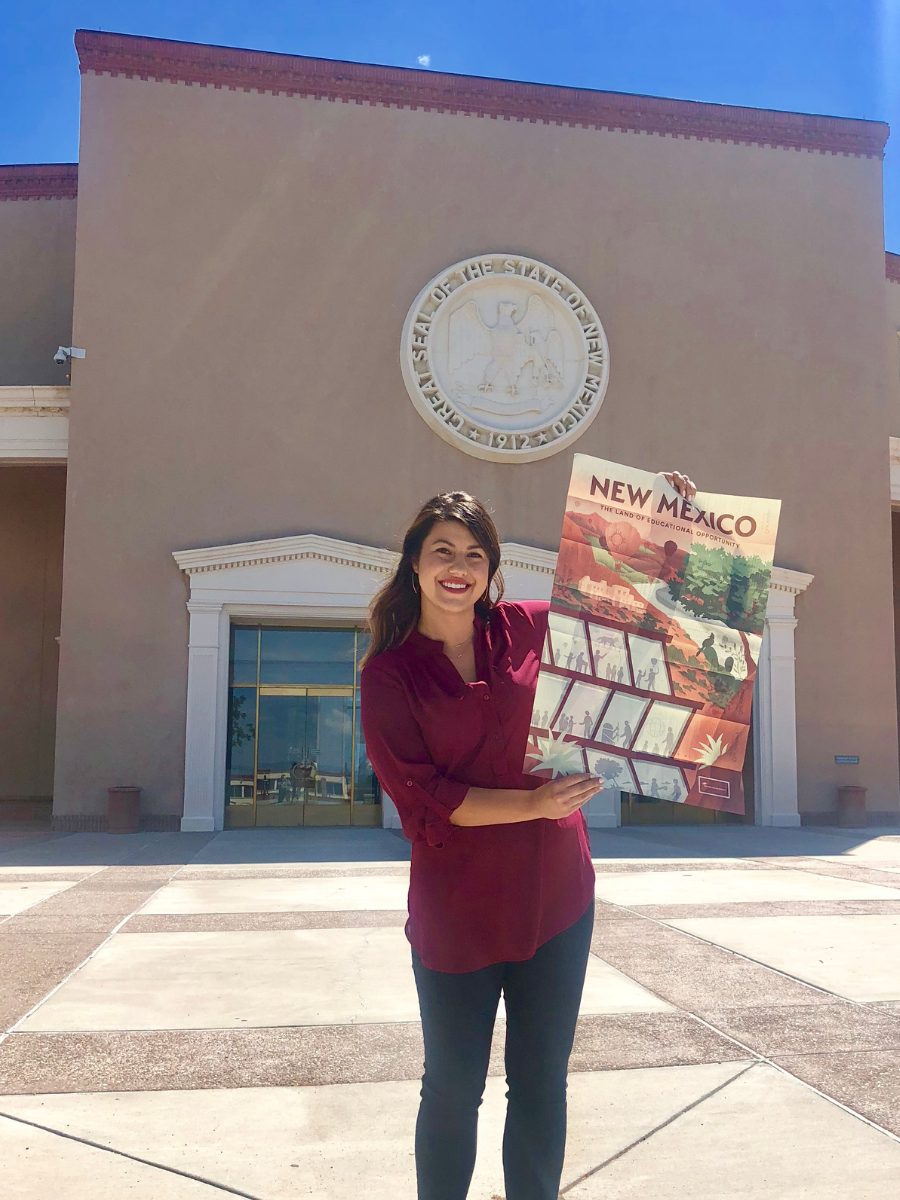
Editor’s note: This article was written by Amanda Aragon, Executive Director of NewMexicoKidsCAN. Amanda is a product of New Mexico public schools and was the first in her family to graduate from college.
If four years ago, we had asked ourselves, “what could we do if we invested an additional $3,000 per student into our education budget” I wonder what we would have imagined?
Some ideas that are currently being explored would have arisen; higher teacher salaries, more funds for at-risk students, more counselors, more extended learning time Suggestions for more.
Though, based on my conversations with New Mexicans across the state I also imagine we would have heard calls for not just more, but for something different, for something better.
I’ve heard suggestions ranging from money to families to support their students’ individual needs, whether that is tutoring or a summer learning program; personalized professional development programs for educators rooted in systemic changes to district instruction that will yield student learning results; and revised school calendars that embed activities so that every student has access to sports and clubs, not just those who have transportation.
Maybe in 2018 the idea that we could invest an additional $3,000 per student was unimaginable, so we did not imagine it. We simply moved forward. Now we find ourselves at a place we never imagined – we have invested more in education, a lot more. In other words, we have done exactly what the unimaginable was. We have added $1.1 billion to the New Mexico education budget over the past five years, equaling approximately $3,030 per student.
Spending for New Mexico’s K-12 system has increased by a third, from $2.69 billion in FY18 to a proposed $3.8 billion this year, even as student enrollment has declined by 20,000 students from its pre-pandemic high in 2018-19.
And, none of these numbers include the $1.5 billion dollars in federal funding our schools have received through federal stimulus. If you include those funds, we are actually closer to $7,500 in additional investment per student.
This investment was important. Most New Mexicans agree there is nothing more important than our students – they are our future. However, we must have a more honest conversation about what we have to show for this increased spending and whether that money is being spent wisely, and as intended.
Due at least in part to Covid-19, we are flying blind as a state. There has been no standardized test data since 2019 to show whether the increased investment has led to improvements in student learning. Though the Public Education Department is preparing to run our annual assessment this spring, we are unlikely to see the results of that assessment until late summer or early fall, long past the time our legislators have appropriated funding for next year.
Also, the assessment our students will take this year is new and will be difficult to compare to prior results, making the data more challenging to interpret and use for budgeting decisions.
If anything, piecemeal data we do have shows that New Mexico students, like students in other states across the country, have suffered significant setbacks in their learning because of pandemic-related disruptions to in-person schooling.
But there’s more missing than achievement data. The legislature passed a law two years ago mandating creation of a website that will display detailed, school-level budget data, and allocated $3 million to fund the effort.
That site was supposed to go live last December 31 but didn’t. After concerns were raised, a site was published but it does not comply with the intent of the law to share information about school level budgets, it only shares district level spending data. Unfortunately, this means our legislators still have no access to data to understand if their appropriations are actually benefiting students as intended.
This is unacceptable, and there’s no legitimate excuse for the delay. The Public Education Department has had more than 18 months to get the site up and running.
Recent funding increases for public education included a tripling of dollars going into the state’s at-risk index. But until we can see school-level detail about how districts disburse money to their schools, we cannot know whether money targeted to at-risk students is, in fact, reaching them.
As it ponders another increase in funding for public education in New Mexico, the legislature would be wise to insist on a few assurances that will aid transparency and results driven investments.
First, the department must commit to getting the budget transparency website up and running as early this year as possible. Second, the state must restart a robust assessment program, so that we have data to help understand how best to target investments.
Third, the legislature should require districts to participate in either one of the two generously funded state initiatives to provide students with additional learning time, while providing districts flexibility to tailor programming to student needs. Every student in New Mexico that wants more instruction time should have access to it.
Yes, this has been a tough couple of years for educators, many of whom are exhausted. But there is plenty of money available to pay teachers well for the extra days of service that our students so desperately need and richly deserve.
It has become common to talk about the ways New Mexico can be the best in the region. We are striving to have the best paid teachers. We want to have the fairest funding system. These are critically important. However, I’m left wondering why we’re not having any conversations about being the best performing state, or being the state making the most progress year over year.
With a billion dollars in investments we should be talking about inputs and outcomes. If at the end of the day, our students are no better prepared to achieve their dreams than they were five years ago, what have we really accomplished?







